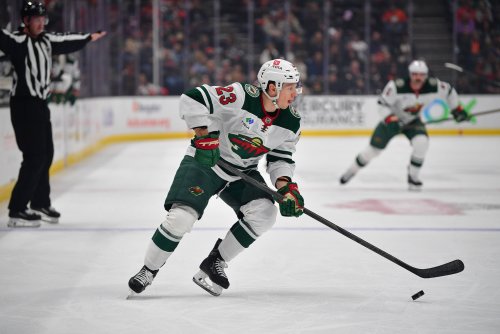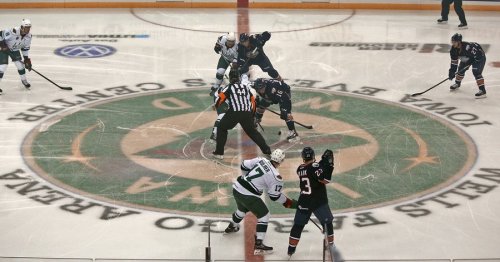
Those point totals are really amazing. After getting drafted second overall in the 2003 draft, Staal puts up 31 points as a 19-year-old rookie in 2003-2004. The full-season lockout in 2004-2005 sends Staal to the AHL. Then, as a 21-year-old, Staal puts up 100 points in 82 games. His point totals in the following seasons are 70, 82, 75, 70, 76 and 70, followed by 53 points in 48 games during the 2012-2013 lockout-shortened season at the age of 28. He’s basically a point-per-game player from ages 21 to 28.
And that’s where we start to see Staal’s production decline. At the age of 29, Staal posts 61 points in 79 games in 2013-2014, followed by 54 points in 77 games as a 30-year-old during the 2014-15 season. Finally, last season Staal produced 39 points in 83 games as a 31-year-old. That’s quite a drop-off. Staal’s gone from a point-per-game player, to one who saw his production drop by 25 percent over his age 29 and 30 seasons to about .75 points per game. And last season saw a further drop of about 33% to about a half a point per game. So, what’s different between Staal’s play through the lockout shortened season of 2012-2013 and his play the last three years?
There’s no doubt that Staal’s getting older. As we’ve seen from studies focusing on forward aging cycles, that players tend to lose their fastballs after age 30.
And we’ve perhaps seen some of that with Staal. If we take a look at just 5-on-5 stats, Staal’s individual shooting percentage the past two seasons were the worst of the modern stats era for him. Last season, Staal’s shooting percentage was 6.41% and the year before was 6.28%. Other than the 2009-10 season at 6.56%, Staal’s individual shooting percentage has ranged between 13.13% in 2012-13 to 8.30% in 2008-09.
In addition, Staal’s power play production has decreased following the lockout shortened season. During his prime years, Staal ranged between 19 and seven power play goals versus seven to one power play goals post-lockout. And Staal’s power play assists ranged between 21 to 10 versus 11 to six post-lockout. Basically, the floor of his most productive years matches his peak after the most-recent lockout.
But shooting percentages can range widely from year to year and the power play is a pretty small sample size to judge even on an annual basis. We have more TOI to gauge at 5on5 and this is where Staal looks rather strong.
Finally, Staal has shown over the course of his career that he is a strong possession player. Compare his chart to Koivu:
The fact is that the Wild will start the season with two possession monsters at center. And providing Staal with first-line center responsibility with Parise and Coyle allows the second line of Koivu between Nino and Zucker to power through secondary competition, a line that may have been the best line in the league through the first two months of last season.
If Staal can duplicate Koivu’s success with Parise and Coyle, the top six looks good for the Minnesota Wild.
Think you could write a story like this? Hockey Wilderness wants you to develop your voice, find an audience, and we'll pay you to do it. Just fill out this form.









Recommended Comments
There are no comments to display.
Join the conversation
You can post now and register later. If you have an account, sign in now to post with your account.
Note: Your post will require moderator approval before it will be visible.